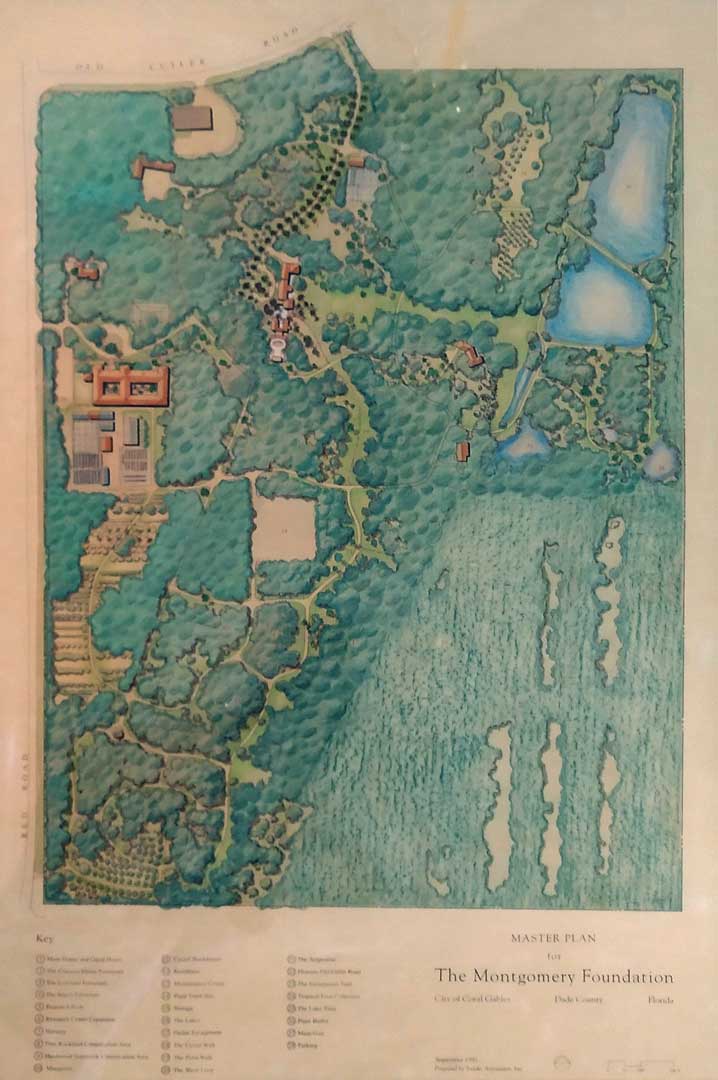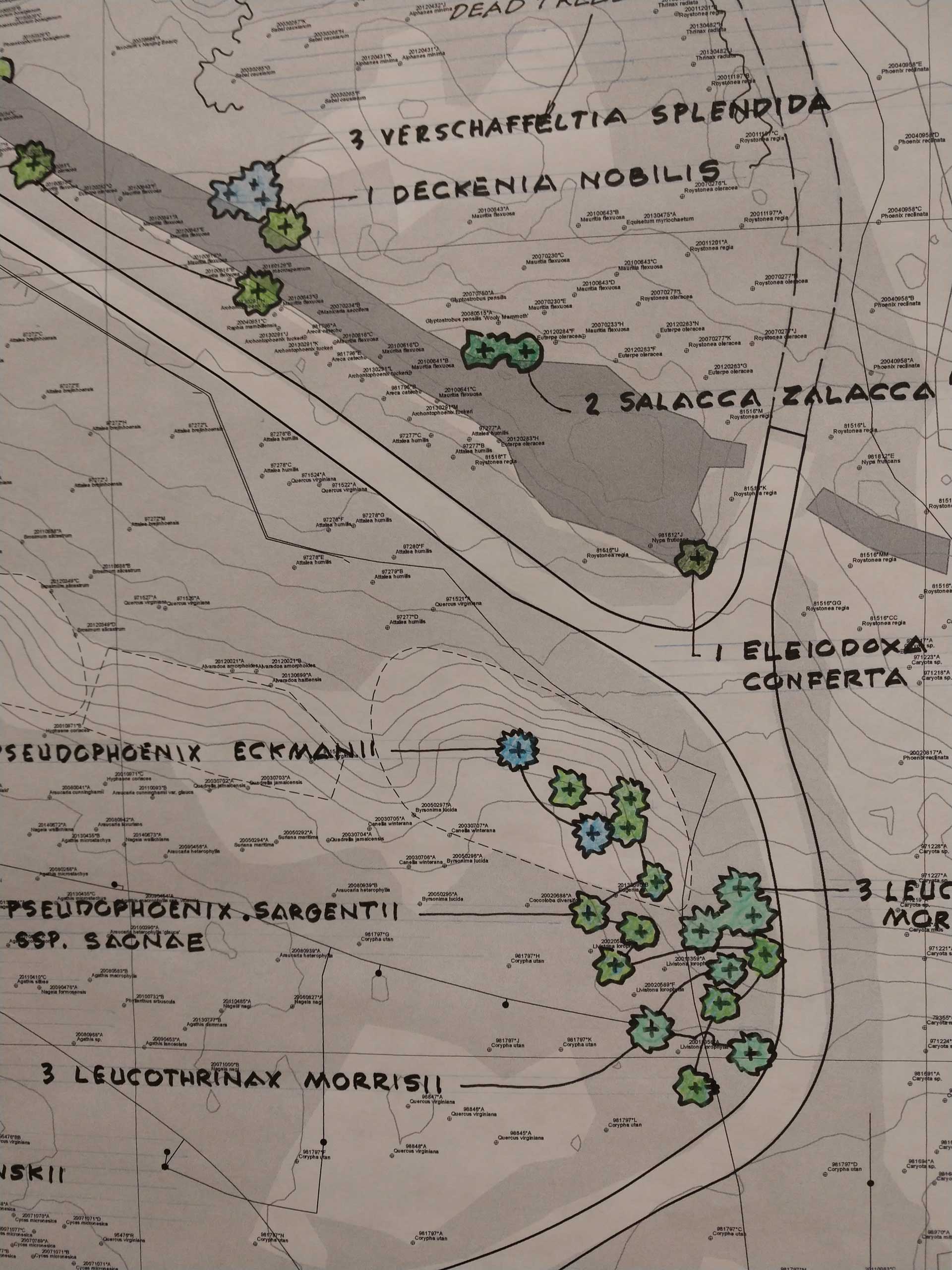Landscape Design
Advancing Landscape Design
An important requirement of the Montgomery Botanical Center mission and planting policy is that our scientific collections of plants must be incorporated into its 120-acre garden in a way that exemplifies excellent landscape design. Montgomery pursues this landscape design requirement with the same professionalism and expertise exemplified by its scientists and horticulturalists.
Historically, Colonel Montgomery utilized the expertise and professional advice of the landscape architects Winton H. Reinsmith and William Lyman Phillips. Shortly after our founder Nell died, Montgomery Botanical retained Joe Hibbard of Sasaki Associates as its landscape architect in 1992, to create a master plan for the garden. At that time, the Colonel’s landscape was in decline and much of the property was underutilized and overgrown with invasive vegetation.
Hibbard’s master plan retained the property’s historical views and vistas. His plan recommended a naturalist style for Montgomery. That style as implemented at Montgomery is a bold understated simplicity that results in a harmony and repose for the garden as a whole instead of excessive intricacy. The master plan design celebrates the habitat diversity of the property including its lakes, lowlands, uplands, wetlands, drylands, sunny areas, shaded areas and the extensive rock escarpment. The smooth, gracefully curving lines for the roads and paths foster a sense of tranquility and guide the eye to ever-changing views and vistas. These views and vistas are framed by extraordinary populations of palms, cycads and tropical trees. The master plan added new features for the landscape, including, most importantly, the 19 acre Palm Walk that now extends southward from the middle of the property to its southern border.


Since 1992, Hibbard has annually created a planting plan to locate within the landscape the new plants ready to leave the Montgomery nursery and to be planted out in the garden. Each year Montgomery has 500 to 1,000 new plants to be planted. Prior to Hibbard visiting the site, the Montgomery staff supplies him with a list of all new plants to be planted together with information as to size of the plant when fully grown, the color and texture of its leaves, its preference as to sun and shade and preference as to dry, wet, acid or alkaline soil. Hibbard then visits the site and working together with the Montgomery scientists and horticulturists develops a planting plan for the year. He then provides a written plan and detailed map for review by the Board of Directors at its Spring Meeting. After approval, the new plants are put in the ground during the summer planting season. During this process, his landscape design and the new plantings have to take into account the removal of some plants because of death as the result of old age, disease, lightning or other cause or because the plant did not thrive in its initial location.
Since 1992, Hibbard, working with the Montgomery staff, has located within the garden more than 15,000 new plants. Today the beauty of the garden reflects all the expertise and efforts of those involved.
Walter Haynes, a Montgomery member, officer and director for more than 50 years has funded a Landscape Design Fund to support the efforts by Montgomery to pursue the landscape design requirement of its mission. In doing so, he said “I hope that the Landscape Design Fund will serve as a model for others to create similar funds. For example, a donor working with the Executive Director could create a fund to support a particular activity at Montgomery that appeals to and interests the donor. Examples could be a fund to support a particular plant collection, to support the work of a scientist, to support plant record keeping and mapping, to support the seedbank or to support the propagation of plants in the nursery.”




















